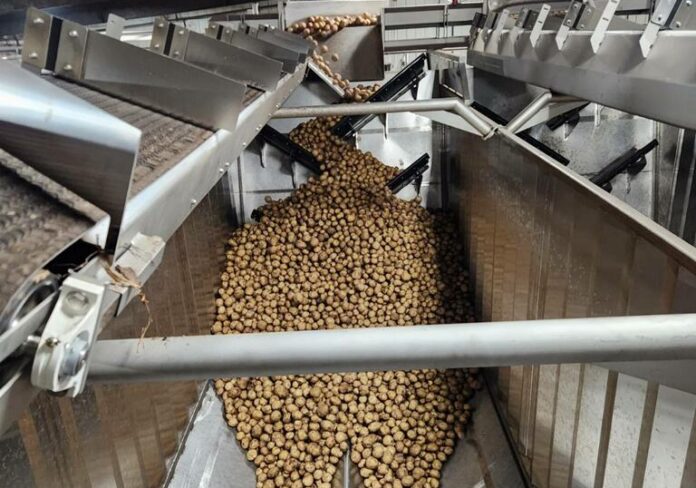
By Stephen Dombroski, Director of Consumer Markets, QAD
While it’s undeniable that the COVID-19 pandemic has had a significant impact on global supply chains, it’s important for individuals and businesses alike to recognize that supply chain issues existed long before the emergence of the virus. Blaming COVID-19 for all supply chain disruptions oversimplifies a complex issue and ignores underlying structural challenges that have been present for years.
Supply chain disruptions predate the pandemic and stem from various factors such as geopolitical tensions, natural disasters, labor shortages, and technological advancements. COVID-19 exacerbated these pre-existing vulnerabilities, highlighting the fragility of interconnected global supply networks.
Rather than assigning blame solely to COVID-19, it’s crucial to acknowledge the systemic weaknesses within supply chains and work towards building more resilient and adaptable systems. This requires proactive measures such as diversifying sourcing strategies, investing in technology to enhance visibility and flexibility, and fostering collaboration among stakeholders.
By reframing the narrative from blame to problem-solving, individuals and businesses can better address supply chain challenges, mitigate future disruptions, and build more robust and sustainable supply networks capable of withstanding unforeseen shocks, whether they stem from pandemics or other sources. It provides the opportunity to learn from a horrible situation and reframes a preferable position to handle all disruptions better in the future — both large and small.
Diversify suppliers
The food industry is highly susceptible to a myriad of risks ranging from natural disasters and climate change to geopolitical tensions and global pandemics. In this volatile landscape, diversifying suppliers emerges as a critical strategy for mitigating risks and ensuring the stability and resilience of the food supply chain.
One of the foremost benefits of supplier diversification in the food industry lies in reducing vulnerability to disruptions. Relying on a limited number of suppliers, particularly those concentrated in specific regions, exposes businesses to significant risks. Natural disasters, political instability, or public health emergencies in these regions can disrupt supply chains, leading to shortages and price volatility. By diversifying suppliers across different geographic locations, businesses can spread risk and minimize the impact of localized disruptions.
Furthermore, diversification enhances supply chain flexibility and adaptability. Different suppliers may offer varied products, packaging options, or delivery schedules, providing businesses with alternatives to meet evolving consumer demands or respond to changing market conditions. This flexibility allows food companies to adjust their sourcing strategies swiftly in response to unforeseen events, ensuring continuity of supply and maintaining customer satisfaction.
Diversifying suppliers also fosters innovation and quality improvement. Engaging with multiple suppliers encourages healthy competition, incentivizing suppliers to innovate, improve product quality, and enhance service levels to remain competitive. Moreover, by sourcing from diverse suppliers, businesses can access a wider range of ingredients, flavors, and production methods, enabling them to offer diverse product portfolios and cater to diverse consumer preferences.
Beyond risk mitigation and operational benefits, supplier diversification promotes social and environmental sustainability. Partnering with suppliers from different regions or backgrounds can support local economies, promote fair labor practices, and contribute to environmental conservation efforts. By diversifying suppliers, businesses can align their sourcing practices with sustainability goals and demonstrate corporate social responsibility.
Just-in-time, safety stock, and economic order quantity: a recipe for success
Striking the right balance between efficiency and reliability is paramount for food businesses when it comes to inventory management. This equilibrium is often achieved through a strategic combination of just-in-time (JIT) inventory management, safety stock, and economic order quantity (EOQ) principles. Each of these approaches serves a distinct purpose in optimizing inventory levels and ensuring operational resilience.
Just-in-time inventory management optimizes resource utilization, minimizes waste, and facilitates agile response to fluctuating consumer demands. Safety stock acts as a buffer against uncertainties, providing a safety net to mitigate the risks of stockouts or disruptions in supply. EOQ principles enable businesses to strike the right balance between ordering costs and holding costs, optimizing inventory levels and minimizing total inventory costs.
By leveraging a combination of these strategies, food companies can achieve a delicate equilibrium between efficiency and reliability. They can streamline operations, reduce waste, and improve resource utilization through JIT practices, while simultaneously safeguarding against supply chain disruptions and fluctuations in demand with safety stock. Furthermore, EOQ principles enable businesses to optimize inventory levels, minimizing both excess inventory and the risk of stockouts, thereby maximizing profitability.
Moreover, the synergy between JIT, safety stock, and EOQ extends beyond operational benefits. It also fosters innovation, promotes sustainability, and enhances social responsibility within the food industry. By embracing a balanced approach to inventory management, food businesses can enhance supply chain resilience, meet evolving consumer preferences, and contribute to the long-term sustainability of the industry.
The strategic integration of JIT, safety stock, and EOQ principles is indispensable for navigating the complexities of the food industry. By embracing a diverse and adaptable inventory management strategy, food businesses can thrive in an increasingly competitive and unpredictable market landscape, ensuring the availability of safe, high-quality products for consumers while maximizing operational efficiency and profitability.
Overall, diversifying suppliers is imperative for ensuring the resilience, flexibility, and sustainability of the food supply chain. By spreading risk, enhancing flexibility, fostering innovation, and promoting sustainability, supplier diversification enables businesses in the food industry to navigate uncertainties and thrive in an increasingly complex and dynamic operating environment. Further, the strategic integration of JIT, safety stock, and EOQ principles is indispensable for navigating the complexities of the food industry. By embracing a diverse and adaptable inventory management strategy, food businesses can thrive in an increasingly competitive and unpredictable market landscape, ensuring the availability of safe, high-quality products for consumers while maximizing operational efficiency and profitability. With this risk management approach, global food enterprises will be prepared for anything, even another pandemic.
 Stephen Dombroski is QAD’s Director for the Consumer Products and Food & Beverage vertical markets. Steve has over 30 years experience in manufacturing and supply chain, and has helped multiple companies in a number of industries to implement S&OP concepts and processes.
Stephen Dombroski is QAD’s Director for the Consumer Products and Food & Beverage vertical markets. Steve has over 30 years experience in manufacturing and supply chain, and has helped multiple companies in a number of industries to implement S&OP concepts and processes.

Credit: Source link














